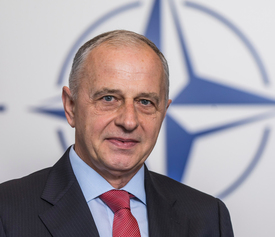NATO Deputy Chief Expects Permanent Bases in Eastern Europe
Under a 1997 agreement with Russia, NATO agreed not to establish permanent bases east of Germany

All Global Research articles can be read in 51 languages by activating the “Translate Website” drop down menu on the top banner of our home page (Desktop version).
To receive Global Research’s Daily Newsletter (selected articles), click here.
Visit and follow us on Instagram, Twitter and Facebook. Feel free to repost and share widely Global Research articles.
***
On Friday, NATO Deputy Secretary-General Mircea Geoana said that he expects the Western military alliance to establish permanent bases in Eastern Europe in response to Russia’s invasion of Ukraine.
Under the 1997 NATO-Russia Founding Act, the alliance agreed not to build permanent bases east of Germany, but Geoana suggested that the deal is now “void” because of Russia’s invasion.
Geoana said that as part of NATO plans, the alliance is working on a “state of the art, permanent” presence in Eastern Europe. At an upcoming NATO summit in Madrid scheduled for later this month, Geoana said alliance leaders will be working on a “fundamental transformation of NATO’s posture, presence and deterrence” in the region, which will include “more of a presence on the ground.”
Last month, The Washington Post reported that Poland and the Baltic states of Latvia, Lithuania, and Estonia are seeking a significant increase in NATO’s presence on their territory. But other NATO members, including France and Italy, are hesitant to do so. NATO members are also divided on whether or not to abandon the NATO-Russia Founding Act.
Earlier in the year, the US deployed tens of thousands of additional troops to Europe, many of which deployed to Eastern Europe and the Baltic states. US military leaders are looking to make the deployment more permanent.
Chairman of the Joint Chiefs of Staff Gen. Mark Milley told Congress in April that US allies in the region are “very, very willing” to build new bases where US troops can be deployed. He suggested that the bases should be permanent, but that the US troops would rotate through them.
“My advice would be to create permanent bases but don’t permanently station, so you get the effect of permanence by rotational forces cycling through permanent bases,” Milley said.
*
Note to readers: Please click the share buttons above or below. Follow us on Instagram, Twitter and Facebook. Feel free to repost and share widely Global Research articles.
Featured image: Mircea Geoana (Source: NATO)

